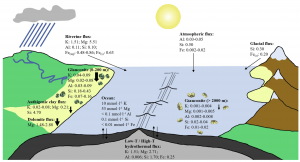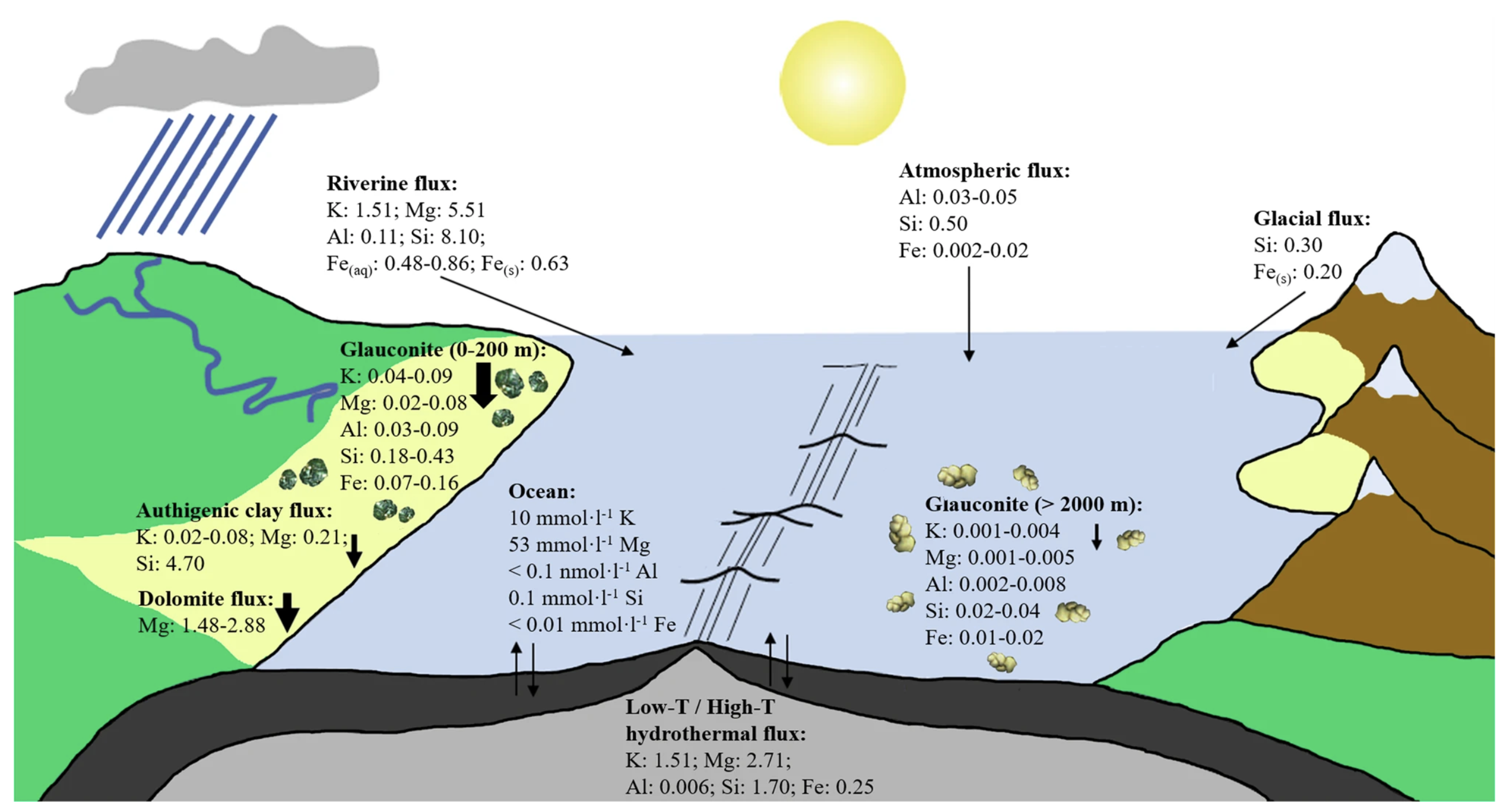
Retrograde clay mineral reactions (reverse weathering), including glauconite formation, are first-order controls on element sequestration in marine sediments. Here, we report substantial element sequestration by glauconite formation in shallow marine settings from the Triassic to the Holocene, averaging 3 ± 2 mmol·cm−²·kyr−1 for K, Mg and Al, 16 ± 9 mmol·cm−²·kyr−1 for Si and 6 ± 3 mmol·cm−²·kyr−1 for Fe, which is ~2 orders of magnitude higher than estimates for deep-sea settings. Upscaling of glauconite abundances in shallow-water (0–200 m) environments predicts a present-day global uptake of ~≤ 0.1 Tmol·yr−1 of K, Mg and Al, and ~0.1–0.4 Tmol·yr−1 of Fe and Si, which is ~half of the estimated Mesozoic elemental flux. Clay mineral authigenesis had a large impact on the global marine element cycles throughout Earth’s history, in particular during ‘greenhouse’ periods with sea level highstand, and is key for better understanding past and present geochemical cycling in marine sediments.
![]()

